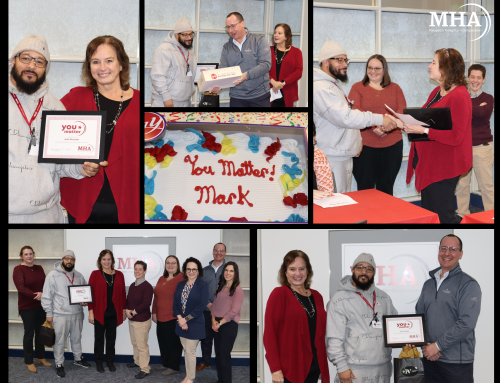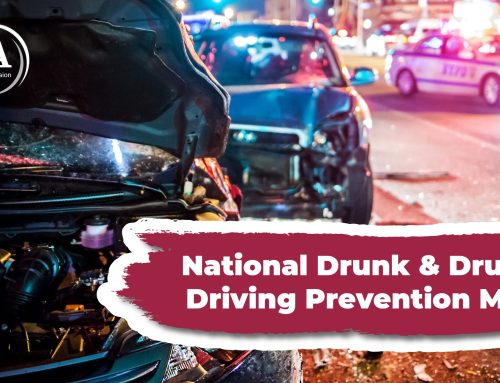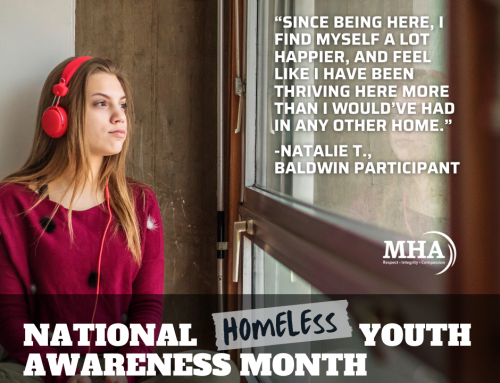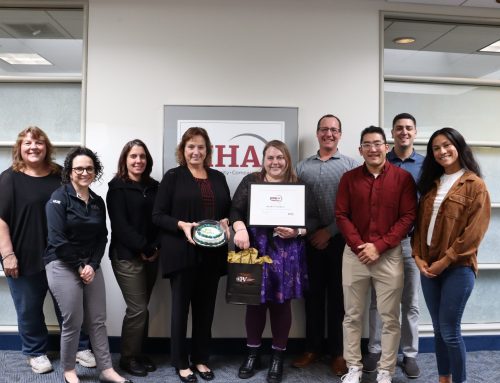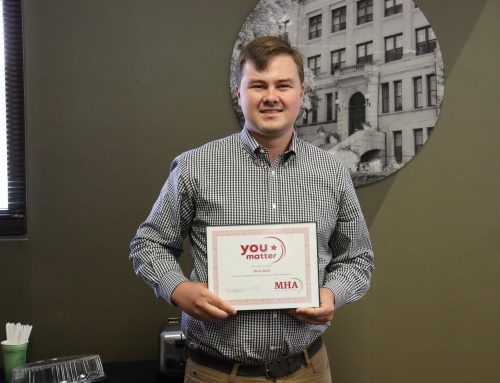April Rex is a U.S. Coast Guard Chief Boatswain’s Mate with over 25 years of active duty and reserve service. “I joined the Coast Guard at 17 with the idea to go out and make a difference in people’s lives,” she said. Her career focus on making a difference in people’s lives now also includes her professional practice as a Doctor of Physical Therapy (DPT).
“When I left the active duty Coast Guard after 11 years of service, I knew I wanted to get into a medical care profession,” she recalled. “The truth is I wanted to be a doctor, but I figured by then I was too old to begin all the years of training. I looked into becoming a Physician Assistant. When that didn’t work out I started to explore nursing. At a recruiting event I met an admissions rep from American International College. I mentioned how I had wanted to be a doctor and was now looking at becoming a nurse practitioner. I remember what she said: ‘Applications for the nursing program are already closed for the year, but I can take you into the Physical Therapy program now—and you’ll be a doctor after all.’ What I truly wanted was to make a difference. It didn’t matter how. And now I am.”
April has an office at Open Square in Holyoke. Recently she began providing volunteer PT services one day each week to members of the Resource Center, an MHA day program. Why does Rex choose to volunteer? “I learned something fascinating about money and success: in order to have either, you have to give a portion away. I don’t have a ton of cash to give away, so I give away my skills instead. Volunteering is also an opportunity for me to help people who aren’t able to come to my practice. I want this to feel like another day in the office, it’s just a different office.”
Her one-on-one therapy sessions emphasize gentle hands-on techniques that are tailored to each individual’s needs to improve the way the whole body works. “It sounds like a joke when I say I don’t have a plan, but it’s really about what each individual is feeling when they come in,” Rex said.
“At the Resource Center we primarily serve individuals with brain injury as a result of stroke or accident,” said Sara Kyser, Vice President of Acquired Brain Injury Programs for MHA. “We also serve those who have significant medical needs but not necessarily a brain injury. This could include people with multiple sclerosis or severe diabetes. For most of our folks, pain is an issue. Their pain is real. Pain pills address the symptoms but not the underlying causes of pain. But physical therapy can.”
“Pain doesn’t need to rob you of your life,” said Rex. “When patients come to me in my practice experiencing pain, I help them understand that they don’t have to live like that. Here at the Resource Center there is a population that can’t always speak for themselves. If someone can’t walk or toilet themselves or feed themselves, those are things traditional physical therapy can help with. What that means is physical therapists don’t always treat pain first, but I put pain at the top of the list. If I can solve the pain puzzle, everything else can get better. In my mind it comes down to this: everyone deserves the right to move freely. My role as a physical therapist is to assess patients, look at how well they move and use my skills to help them move better.”
“When it comes to pain and movement, no two people are alike,” said Kyser. “People’s goals are unique as well. You can’t just do the same things with everyone. There are no cookie cutter answers. The daughter of one member said to me about physical therapy for her mother, ‘What’s possible?’ That’s exactly the question we should be asking.”
Rex does hands-on work and training for physical issues related to posture, body mechanics, balance and gait. She also helps patients continue training at home with functional exercises to build muscle. “I ask the patient, ‘What do YOU need help with?’ and we go from there,” she said. “We create a game plan and a partnership, then attack the barriers that are limiting someone from achieving their goals. At the Resource Center we have private room with a treatment table, but if someone is more comfortable in a wheel chair I treat them there. I treat each person individually and wholly, every time.”
Human touch is basic to physical therapy and it helps to build a foundation of trust between the therapist and patient. That is especially important for people who have an acquired brain injury. “The population served at the Resource Center is already being touched regularly for transfers or medical purposes, but that is not always the touch of human connection, like hugging or handshakes,” Rex explained. “With hands-on physical therapy, you know I’m going to touch you, I’m always going to get to know you, and you are gaining my trust as someone who is helpful. The reality is that hands-on physical therapy may be the only time this population gets that kind of touch.”
Physical therapy also has applications for improving emotional wellness. “The veil of depression sinks you down,” Rex said. “You’ll never be able to address physical difficulties successfully if you don’t also address a patient’s emotional outlook. There’s a PT skill set, cranial sacral therapy, that can help with depression, anxiety and PTSD (post-traumatic stress disorder). It’s a gentle hands-on technique. I see patients up to eight visits for those treatments, and we keep track of where a patient is at with scores to measure how they are feeling. Whether pain is a result of accident, too much time in a wheelchair, or whatever it may be, if I can bring physical relief there can be a connection to emotional wellness as well. The power of therapeutic touch doesn’t always have a scientific answer to explain its full outcome.”
Emily Gracewski, Day Supports Coordinator at the Resource Center, said that having Rex volunteer is an incredible opportunity. “Our members already can benefit from services including vocational training, the music program, and a variety of ways to regain skills and abilities, and adding a new element through physical therapy allows us to serve more people better,” said Gracewski. “Our day program has been open for a year and this is the first time we’ve been able to offer PT on site. April is here every Tuesday, appointments are required and she’s been fully scheduled every time she comes in. It’s a big part of what people are seeking and it’s available to anyone who is a member at the Resource Center.”
Rex pointed out that care given at the Resource Center can have impact beyond the person who is cared for directly. “Caregivers are often at a loss not knowing how to help a family member who has suffered a brain injury. If we can improve the patient’s life, then the caregiver’s life also improves. A piece of worry can go away, creating a ripple effect that makes more things better for more people.”
The services that Rex is providing on a volunteer basis could eventually be provided to Resource Center members as insurance-covered services, according to Kimberley A. Lee, Vice President of Resource Development and Branding for MHA. “April’s volunteerism is both a generous personal contribution and part of a longer term strategy to build a continuum of services for people coming to the Resource Center,” said Lee. “Those people will include day program members as well as participants in MHA programs through our New Way division or Department of Developmental Services division, patients at MHA’s Bestlife Emotional Health and Wellness Center, and potentially others. Our goal is to add physical therapy as a treatment modality available to anyone we serve. You know, April provides a great example of the idea that everybody has an abundance of something. In her case, it’s special training and skills, plus a desire to help. She came to us out of goodness of her heart, wanting to put her abundance of skills to work helping people in need, and we are extremely thankful to her.”
Lee added that volunteerism is a great way to ease into a relationship with an organization. “April decides what days and hours she wants to work into her schedule. She gains exposure to a wider population of prospective patients and to MHA as an agency. This allows her to be supportive of the work our organization is doing and the people we are serving together. At the same time, MHA has the opportunity to evaluate the various ways physical therapy can be integrated into our programs and services. The experience and outcomes can provide valuable evidence to justify grants and other funding requests.”
“It’s great that MHA is setting the bar a little higher and I’m glad to be part of it,” said Rex. “I never set out to be a business owner; I set out to do what I love. I wanted to make a difference in people’s lives.”
About MHA:
What We Do
MHA helps people live their best life. We provide access to housing services, substance use recovery, emotional wellness therapies, residential programming for individuals with developmental disabilities or those who are survivors of an acquired brain injury, and more. With respect, integrity and compassion, MHA provides each individual served through person-driven programming to foster independence, community engagement, wellness and recovery.
Why We Matter
The youth, adults, seniors and families we serve want the same things in life as anyone: to have friends, to work, to go to school, to have meaningful relationships, to express themselves (and be heard), and to be accepted in their community for who they are. With our help and resources from a caring community, people can live their potential, in their community, every day.
How We Think
Our founders not only believed—they knew—that people with developmental disabilities shouldn’t be isolated and hidden in large, state-run hospitals. Starting in the 1960s, MHA’s groundbreaking efforts to transition people away from institutional living to a life in our community became a model for the deinstitutionalization movement. As it did then, our creative thinking continues to drive our compassionate care and our innovative approaches to programming.
